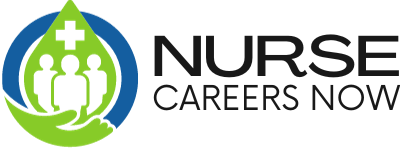
An occupational health nurse provides care for employees in the workplace, whether that might be a small construction site or a large corporate office. Some of the responsibilities of an occupational health nurse include treating work-related injuries onsite, managing and investigating health insurance claims, and making recommendations on how the company can improve workplace health and safety.
If you’re interested in becoming an occupational health nurse, it helps to know which steps to take to earn the necessary certification so you can start pursuing this career.
Earn Your Nursing Degree
Working as an occupational health nurse typically requires you to have either an associate degree in nursing (ADN) or a bachelor of science in nursing (BSN) degree, though some employers may prefer a candidate with a BSN over one with an ADN. Earning these degrees usually takes between two and four years or longer, depending on whether you go to school part-time or full-time.
Pass the NCLEX-RN Exam
The National Council Licensure Examination for Registered Nurses (NCLEX-RN) is a national exam that all nurses must take to earn their nursing licenses. It features between 75 and 145 questions that can be multiple choice, fill in the blank, or multiple response.
The time limit for the NCLEX-RN is five hours, and you must answer questions correctly at least 50% of the time to pass. You have the option of retaking the test if you fail. However, it may be encouraging to know that, in 2020, the national first-time pass rate for this exam was 86.6%.
Gain Two or More Years of Nursing Experience
Having hands-on, real-world nursing experience can help prepare you to become an occupational health nurse. Many employers look for nurses who have at least two years of professional experience.
If possible, look for entry-level occupational health roles right out of nursing school so you can add this valuable experience to your resume. If no occupational health roles are available, look for nursing positions that increase your exposure to acute injuries and illnesses or that include other responsibilities related to occupational health. Some areas covered by occupational health nursing include:
- Behavioral science
- Regulatory compliance
- Policy management
- Industrial hygiene
- Ergonomics
- Toxicology
Get Certified as an Occupational Health Nurse
Becoming certified in occupational health nursing provides you with the credentials to work independently as an occupational health nurse. You must renew your certification every five years to stay active. The exam for the certification has 160 questions, costs around $400, and has a three-hour time limit.
You can get two types of certifications: Certified Occupational Health Nurse (COHN) or Certified Occupational Health Nurse – Specialist (COHN-S). You must choose one certification over the other, as you cannot hold both at the same time. The main difference between COHN and COHN-S is that the COHN certification focuses more on clinical practices, while the COHN-S certification focuses more on administration.
COHN
To be eligible for the COHN exam, you must have an active and current RN license. You must also have at least 3,000 hours of experience in an occupational health nursing role that you accumulated within the past five years.
If you do not have 3,000 hours of hands-on experience in occupational health, you must have spent at least 2,000 hours in a graduate or baccalaureate program related to occupational health within the past five years before applying for the COHN.
Nearly half of the questions on the COHN exam measure your knowledge related to clinical duties and responsibilities. Other areas you’ll be tested on include the roles of coordinator, advisor, and case manager in occupational health nursing.
COHN-S
You must have an active and current RN license and a bachelor’s degree or higher to take the COHN-S.
Similarly to the COHN, you must also have spent at least 3,000 hours working in occupational health nursing during the past five years or have spent at least 2,000 hours in a graduate or baccalaureate program related to occupational health during the past five years.
About 30% of the questions on the COHN-S exam measure your knowledge related to the manager role, and 20% measure your knowledge related to the clinician role. Other areas you’ll be tested on when taking the COHN-S exam include your knowledge of the educator role, consultant role, and case manager role.
Find an Occupational Health Nursing Position
RNs, including nurses who hold an occupational health certification, are in high demand. When you’re ready to become an occupational health nurse after earning your certificate, there are numerous ways to find open positions.
Browse some of the top online job boards like Indeed or ZipRecruiter, or visit dedicated job sites for nurses such as Nurse.org or the American Nurses Association. You can also check with your current healthcare network to see which positions are open.
A career as an occupational health nurse can be highly rewarding and fulfilling, especially if you enjoy caring for others outside of a traditional healthcare setting.
Resource Links
- “Occupational Health Nurse” via Nurse.org
- “How to Become an Occupational Nurse” via NurseJournal
- “2020 NCLEX® Examination Statistics” via National Council of State Boards of Nursing
- “”Be Ready for Exam Day” via NCLEX

